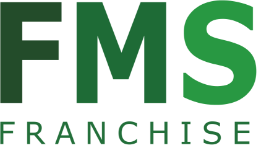
Demographic mapping is a useful tool for understanding the marketplace. You can plan on efficiently and effectively taking your market share or “share of the pie”, when you know your specific marketplace.
Demographic mapping for site selection, helps you understand the market by collecting data from various sources, to present the business intelligence needed for sound decisions based on geography.
The first step in understanding the marketplace is to grasp the terminology:
Market: A place where products are bought and sold, the area of economic activity in which buyers and sellers come together and the forces of supply and demand affect prices.
Market Share: The percentage that a company has of the total sales for a particular product or service.
Market Size: Can be given in terms of the number of buyers and sellers in a particular market or in terms of the total exchange of money in the market, generally annually. When given in terms of money, market size is often termed market value, but in a sense distinct from market value of individual products.
Market Value: When given in terms of money, market size is often termed market value.
Market analysis: Studies the attractiveness and the dynamics of a special market within a special industry.
Consumer behavior: The study of individuals, groups, or organizations and the processes they use to select, secure, and dispose of products, services, experiences, or ideas to satisfy needs and the impacts that these processes have on the consumer and society. It blends elements from psychology, sociology, social anthropology and economics.
Trade area: A geographic area within which a business enterprise or center of retail or wholesale distribution draws most of its business.
Competitive market analysis: Understanding where your competitors are located and their market share.
Why use business mapping: Knowledge is power, business mapping gives you the knowledge to gather market information for different sources like the census, market research and demographic profiling (psychographics). Business data collected from mapping software can be combined with non-geographic data and information (Chamber of Commerce reports, industry reports as example).
How to use business mapping for finding your first locations: Finding your first location will be easy. All you have to do is spread out the location in a similarly profiled area. Ideally your second location will be far enough away not to take customers from your first location. (cannibalization). The second location should be close enough to commute on a daily basis, even on an hourly back and forth basis).
All of your locations should look like your first location- If it looks similar, then there is a good chance it will be successful: If it looks like a duck, walks like a duck- then it is a duck.
Validation: It’s good to note here that business mapping cannot find a perfect location; it can only validate an available location for rent, lease or sale. It only makes sense to find the perfect location, if you can acquire the location and move in. Commercial realtors are very persuasive, they will use tools to convince you to invest and locate. It’s your job to understand the data presented and if not presented properly, to ask for the correct analysis. For example- a realtor will present a huge trade area to collect demographics- 80% of the numbers are outside of the trade area.
What business cannot replace: Mapping cannot replace feet on the street- good site selection techniques- visual inspection, traffic counting, table availability studies, competition analysis; local economy health check (did the local factory employing ½ the city just shut down).
What demographic mapping cannot do: Initial mapping cannot find locations. Market sizing software or techniques can determine sizing and suggest numbers of locations and locales. This is highly specialized and very expensive. Demographic mapping “Proves a negative” that is, it proves a place is not worthy of an investment. Demographic mapping relieves the need to put feet on the street to look at an unworthy property. Site selection is very time consuming and expensive. NO is a good answer when it comes to determining if a site is worth “feet on the street”; see validation in the paragraph above. Realtors will present a duck when it is really a platypus- looks like a duck, walks like a duck, but is not a duck.
Locate correctly: A failed location can drag down a profitable business. It’s better to measure twice and cut once. Don’t be in a rush to buy or locate a property. Take your time, do your research, talk to the neighborhood, the Chamber of Commerce, the local community development department and the local building inspectors. Expanding locations is easy, just do it properly.
For more information on Franchise Site Selection or Franchise Territory Mapping, Contact Alan George: [email protected].

FMS is a team of expert franchise consulting professionals based in Canada that provides solutions for franchise development, franchise consultation, and expansion of businesses globally.